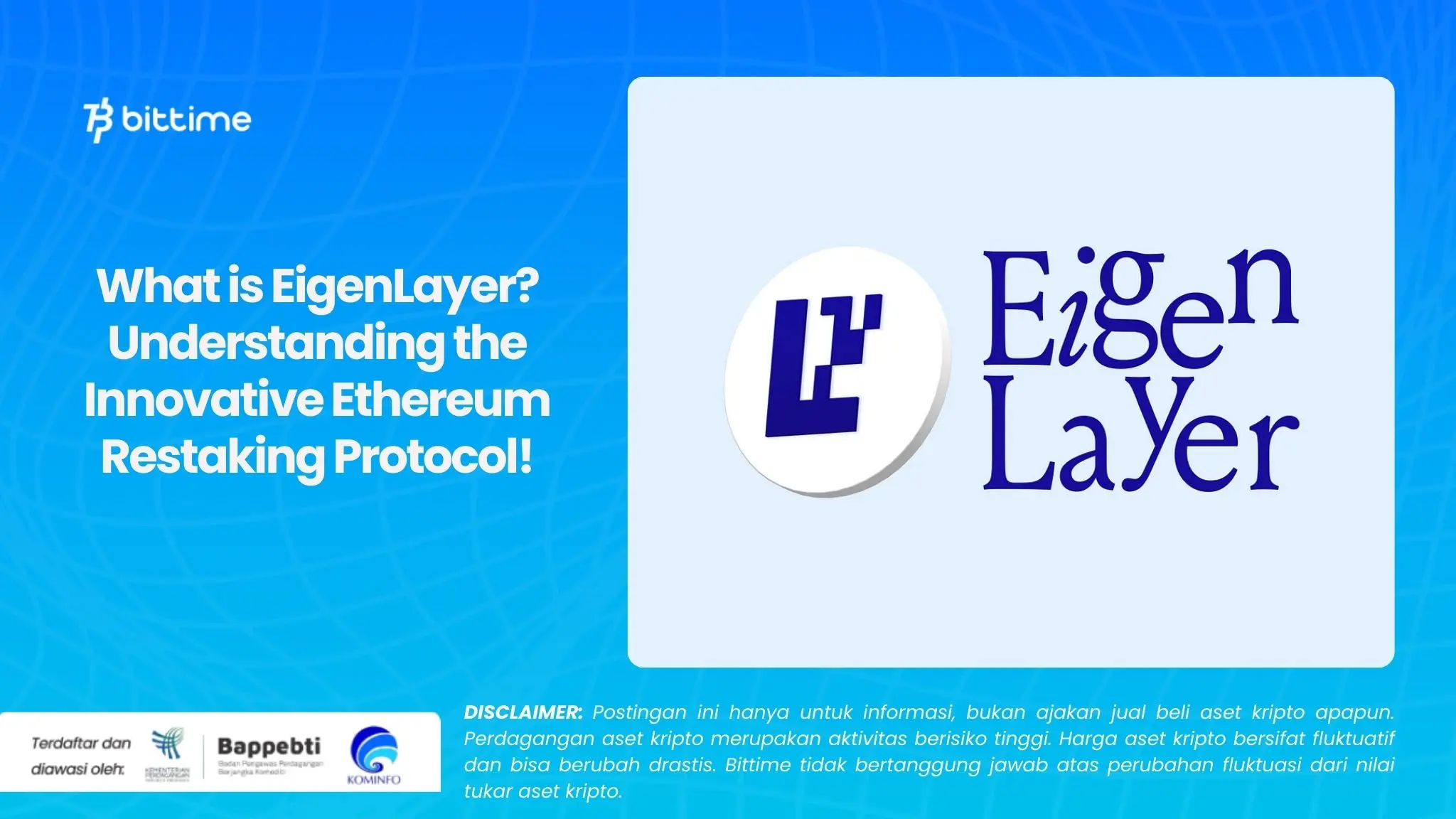What is EigenLayer? Understanding the Innovative Ethereum Restaking Protocol!
2024-09-08
Bittime - EigenLayer is an innovative restaking protocol on Ethereum. Restaking is a new approach that allows users to utilize staked ETH or liquid staking tokens (LSTs) to earn additional yield.
So, what is EigenLayer? How does this Ethereum restaking protocol work and what are its advantages and disadvantages? Let's answer these questions in this article!
What is EigenLayer?
EigenLayer is an innovative protocol built on the Ethereum network, introducing the concept of “restaking.” This is a new approach that allows users to leverage already staked ETH or liquid staking tokens (LSTs) to earn additional yield.
Imagine you can get two (or more) benefits from one investment - that's the essence of EigenLayer.
This protocol acts as a bridge between staked asset owners (restakers) and services that require cryptoeconomic security, known as Actively Validated Services (AVS).
In other words, EigenLayer creates a marketplace where you can "rent" the security of your staked assets to various decentralized applications (dApps) that need it.
Read also: EigenLayer Improves EigenDA Security to Fight Sybil and DDoS
How Does EigenLayer Work?
The way EigenLayer works can be imagined like a property leasing system, but in the context of blockchain security. Here are the simple steps:
Restaking: Users can choose to “restake” their staked ETH or liquid staking tokens (LST) into the EigenLayer smart contract.
Delegation: After restaking, users can choose to delegate their assets to an operator or run their own validator.
AVS Validation: The operator or validator can then choose to validate various Actively Validated Services (AVS) connected to the EigenLayer.
Reward: In return, users get additional yield from the AVS they validate, in addition to the Ethereum staking rewards they already get.
Open Market: EigenLayer operates as an open marketplace where AVS can offer incentives to attract validators, while validators can choose which AVS they want to support based on potential returns and risks.
It is important to note that there are two types of staking on EigenLayer: Native Restaking (using direct Ethereum validators) and Liquid Restaking (using liquid staking tokens such as from Lido or Rocket Pool).
Problems Faced by EigenLayer
While promising, EigenLayer also faces several challenges:
Risk of Slashing: Users who restake face a greater risk of slashing, as they are subject to the rules of Ethereum and the AVS they validate.
Complexity: This system is more complex than traditional staking, which can be an obstacle for novice users.
Centralization Risk: If too much ETH is concentrated in the EigenLayer, this could pose a centralization risk for the Ethereum network as a whole.
Technical Challenges: Managing multiple AVS with varying requirements and rules requires a very sophisticated technical infrastructure.
Advantages and Disadvantages of EigenLayer
Although this protocol promises many benefits, EigenLayer still has some drawbacks. So, what are the advantages and disadvantages of this protocol? The following is the explanation.
Advantage:
Increased Results: Users can get additional rewards from various AVS.
Capital Efficiency: Allows the use of the same capital to secure multiple services.
Improved Ecosystem Security: Helps small projects gain access to Ethereum-level security.
Innovation: Opens opportunities for the development of various new services on top of Ethereum.
Deficiencies:
Higher Risk: Greater slashing potential than regular staking.
Dependence: AVS security depends on the health of EigenLayer and Ethereum.
Learning Curve: Requires a deeper understanding of how the protocol works.
Regulatory Risk: As a new innovation, it can face regulatory challenges in the future.
Read also: EIGEN Staking Withdrawal Time Shortened from 24 Days to 7 Days
EIGEN Coin
EIGEN is the native token of EigenLayer which was launched in May 2024. This token plays an important role in securing decentralized restaking protocols and supports actively validated services (AVS) such as EigenDA. Some important points about EIGEN:
Initial Supply: 1.67 billion tokens
Utility: Staking to secure various services and governance in the EigenLayer ecosystem
Distribution: Starting with a “stakedrop” airdrop targeting participants actively restaking LST
Vesting and Transferability: Planned to start after September 30, 2024
Sustainable Development: Eigen Foundation is preparing Season 2 airdrop with new features
Conclusion
EigenLayer represents a major step in the evolution of the Ethereum ecosystem and DeFi in general. By enabling the reuse of cryptoeconomic security, this protocol opens the door to new innovations and greater efficiency in the use of capital in the crypto space.
However, as with every new innovation, EigenLayer also carries its own risks and challenges. Users and investors need to properly understand the working mechanisms, potential benefits, and risks involved before participating.
As the EigenLayer ecosystem develops, we will likely witness the emergence of new applications and services that leverage this decentralized security.
That is a review of what EigenLayer is. Starting from how it works, to the advantages and disadvantages. So, are you interested in trying this Ethereum restaking protocol?
How to Buy Crypto on Bittime
You can buy and sell crypto assets in an easy and safe way via Bittime. Bittime is one of the best crypto applications in Indonesia which is officially registered with Bappebti.
To be able to buy crypto assets on Bittime, make sure you have registered and completed identity verification. Apart from that, also make sure that you have sufficient balance by depositing some funds into your wallet. For your information, the minimum purchase of assets on Bittime is IDR 10,000. After that, you can purchase crypto assets in the application.
Learn How to Buy Crypto on Bittime.
Monitor price chart movements of Bitcoin (BTC), Ethereum (ETH), Solana (SOL) and other cryptos to find out today's crypto market trends in real-time on Bittime.
Disclaimer: The views expressed belong exclusively to the author and do not reflect the views of this platform. This platform and its affiliates disclaim any responsibility for the accuracy or suitability of the information provided. It is for informational purposes only and not intended as financial or investment advice.






